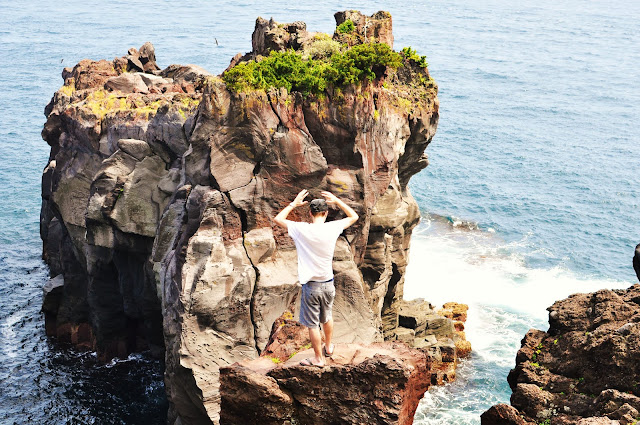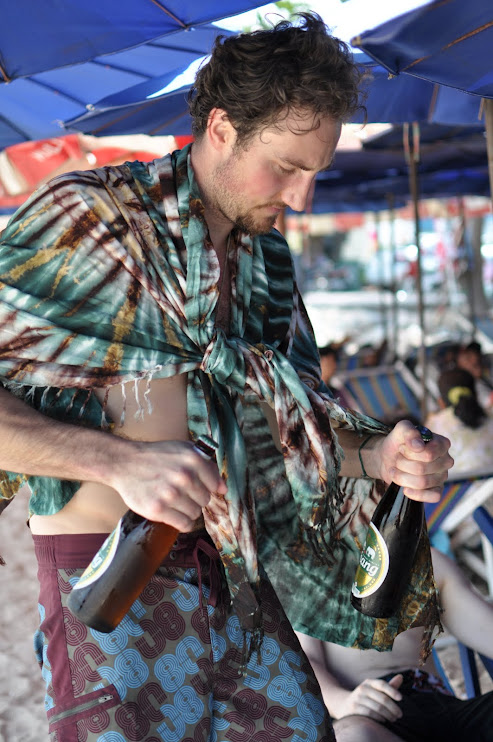 |
| Here I am, not too exhausted, demonstrating the express lane down the mountain. |
 |
| Just south of Ito lies the stunning Jogasaki coast, a beautiful section of seaside with crystal blue water and jagged cliffs. |
 |
| The Eternal Buddha watches over all at Shimoda's Gyokusen-ji temple. |
 |
| Here the sky lit up in a fireball at the cemetery home to the graves of sailors from Commodore Perry's infamous Black Ship Fleet. |
 |
| Even the spectators were dressed in traditional garb. Here two yukata (light cotton kimono worn in the summer) clad onlookers follow a kart as a man furiously thumps at his drum. |








